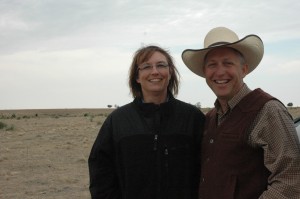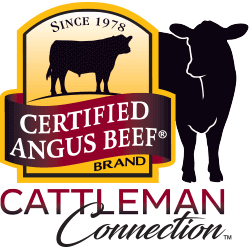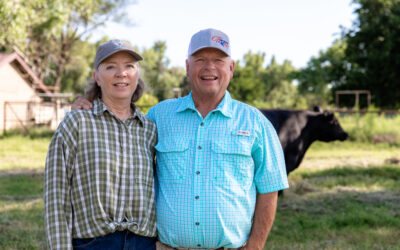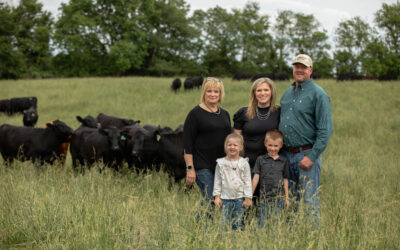
What costs more than buying hay?

Like the extra hay that ranchers Joe and Brenda Anderjaska, of Hayes Center, Neb., are going to buy this year. It’s those longer-term costs that get a little harder to figure when trying to assign exact values.
I rode shotgun through some of Anderjaska’s summer pastures on Monday. As we looked at their commericial and registered Angus herd, the sky was gloomy. The clouds teased with a few sprinkles, but, like so many times this summer, moved along before offering reprieve.
So the couple is weighing their options, and when they do that, they think behind the fiscal year.
Joe says he’s seen others swath and bale their poor corn stands, but, “That’s slicked off so bad. It’s not going to catch snow, that thing might blow all winter long. We’re going to turn cows into our stalks and see what they can graze.”
Buying hay is expensive, but what is the cost of letting your soil fly away?

“The only way you’re going to make a living is if you keep your natural resources and make them better for the next year,” he says.
The logical equation is either find more feed or run fewer critters.
“People are saying, ‘Well, with this drought, sell your cows off and buy them back later.’ I’ve got a lot, a lot of years in history and genetics that I’m not going to just haul to the salebarn and get rid of,” Joe says. “I’ll figure out some way, I don’t care what it is. We’ll probably go through cows really, really hard this fall, but we’re going to try to keep numbers as close as we can.”
It’s pretty difficult to put a value on a quarter of a century of engineering their perfect herd, but they do know they don’t want to start that process over.
They’re securing more hay and looking at grass in the Southeast, and thanking their lucky stars that they’ve focused on moderate-framed, efficient cows from the get-go.
“We don’t feed them corn and we don’t feed them silage. They don’t get all these good rations hauled out to them,” Joe says. “We’ve worked really hard to get cows that can convert grass and roughage to pounds as efficiently as possible.”
What are you doing to deal with the drought? Are you looking at any creative ways to keep the cows without breaking the bank?
May your bottom line be filled with black ink,
Miranda
You may also like
Legacy in the Golden Land
On a quiet stretch of Northern California rangeland, a different story unfolds. The Borror family’s legacy modestly speaks through the cattle they raise, the ground they steward. The generations who’ve made a life here demonstrate commitment to doing things right, even when no one is watching.
Helping Hands, Helping Herds
“When I die, I want to come back as one of your cows,” murmurs a friend to Steve Zybach. Full to the brim from an alfalfa ration every day, bountiful fields of lovegrass stretched out across the Texas Panhandle—and owners who leave no ounce of cattle care up for question. The Zybachs’ motivation for this level of dedication to their Angus cattle is simply love.
An Ambassador for All
Joanie, with daughter Lindsey and her husband, Adam Hall, raise registered Angus cattle with two primary goals: producing high-quality seedstock that perform well in a wide variety of environments and ensuring end-user satisfaction. Those goals tie everything together, from promoting Angus to other producers to sharing their story with CAB partners and beef consumers.



